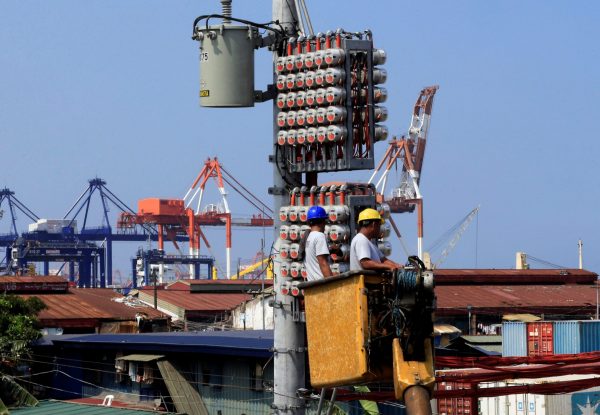But a careful assessment of the projects included in the initial investment agreement demonstrates that these claims are untrue. Rather than deceptive Chinese behaviour, changes in the Philippines’ national institutions, its regulatory procedures and project-specific factors better explain the delays and cancellations. These host state factors affect Chinese and non-Chinese projects alike.
One reason foreign investment and aid projects in Mindanao are delayed is due to the uncertainties regarding the Bangsamoro Basic Law (BBL), which institutionalises a high level of autonomy to the Islamic areas of the southern Philippines. The BBL shifts authority over investment decisions and other legal regulations, causing headaches for Chinese firms and Filipino development authorities alike. For instance, the BBL hindered China Power corporation’s ability to raise funds from public sources in 2017, which led to the project’s eventual cancellation.
Another cause for delay is that Philippine regulation requires detailed feasibility studies of planned projects, which can cost millions and take an enormous amount of time. Findings from these feasibility studies — which can uncover geographic unviability, technical incapacity and immense cost overruns — explain many instances of modification, delay or cancellation of Chinese projects in the Philippines.
In other countries, Chinese firms are not required to conduct feasibility studies quite so rigorously. But this process demonstrates the seriousness of Chinese and Philippine consortiums to invest and any cancellations made subsequent to a feasibility study should not be seen in bad faith. While some projects have been cancelled following review, others have proceeded.
The Philippine investment environment is also impacting the investment process. Some Chinese companies have been discouraged from continuing their investment deals after encountering regulatory hurdles and unnecessary red tape.
For instance, an agreement between the Philippine nickel ore producer Global Ferronickel and the Chinese copper giant Baiyin Nonferrous Group has been put on hold because of a moratorium on the Philippine mining sector, which includes a ban on all types of mineral investments. The investment deal was made with the expectation that the moratorium — which was imposed by the previous Aquino administration — would quickly be removed by the Duterte administration. But the Philippine government has dragged its feet and only recently began taking steps to lift the moratorium.
In another ongoing example, SIIC Shanghai International Trade wanted to construct a steel manufacturing plant with Philippine company Mannage Resources Trading Corp. But the plan has stalled because the Philippine government confiscated 20,000 tons of deformed steel bars at the port due to confusion regarding import licenses.
Other projects have been cancelled due to corporate decisions by Philippine companies to pursue other options. China Harbour Engineering Corporation (CHEC) signed a US$139 million agreement with Reghis M Romero R-II Builders to expand the Manila Harbour Centre through land reclamation. But this project was abandoned when R-II Builders decided to tap local sources instead, such as the City of Manila and the Philippine Reclamation Authority. Nonetheless, CHEC and R-II Builders decided to pursue other projects in Cebu and Davao as well jointly bid for the construction of the Clark Airport’s new terminal building.
Finally, some projects were never meant to be investments. For instance, SL Agritech and Jiangsu Hongqi Seed’s agreed to build a hybrid rice facility not in the Philippines but in East China’s Jiangsu province. In another project, Wuxi Huaguang Electric Power’s project with Bronzeoak Philippines was intended to provide Chinese material exports to a German and Filipino consortium currently constructing a biomass plant in Negros.
Project delays or cancellations are neither definitively good nor bad. On the one hand, good projects that have been delayed or cancelled cost an enormous amount of time and money to the Philippines. Filipinos could have benefitted from improved infrastructure and increased competitiveness had the projects moved forward. On the other hand, if a project’s benefits do not exceed its associated costs, its unintended cancellation should be considered fortuitous, especially with the recent concerns surrounding predatory Chinese lending.
To only find fault in the delayed or cancelled outcomes of the deals demonstrates a narrow understanding of how foreign investment and aid ventures work. While China should be criticised for the lack of transparency regarding the financing parameters of many of the deals it has made, the Duterte administration should also be faulted for equating investment commitment to actualisation in order to generate political capital.
Various national factors, regulatory requirements and project-specific considerations explain the projects’ delays and cancellations. The possibility of China-driven delays should be considered, but these narratives should not be imposed without supporting data and careful empirical analysis. Otherwise, these analyses border on alarmist yellow journalism while at the same time underestimating the agency of Philippine actors.
Alvin Camba is a doctoral candidate at the Department of Sociology, Johns Hopkins University. He works on Chinese capital, development, and elite competition in Southeast Asia. His works can be found at alvincamba.com.

